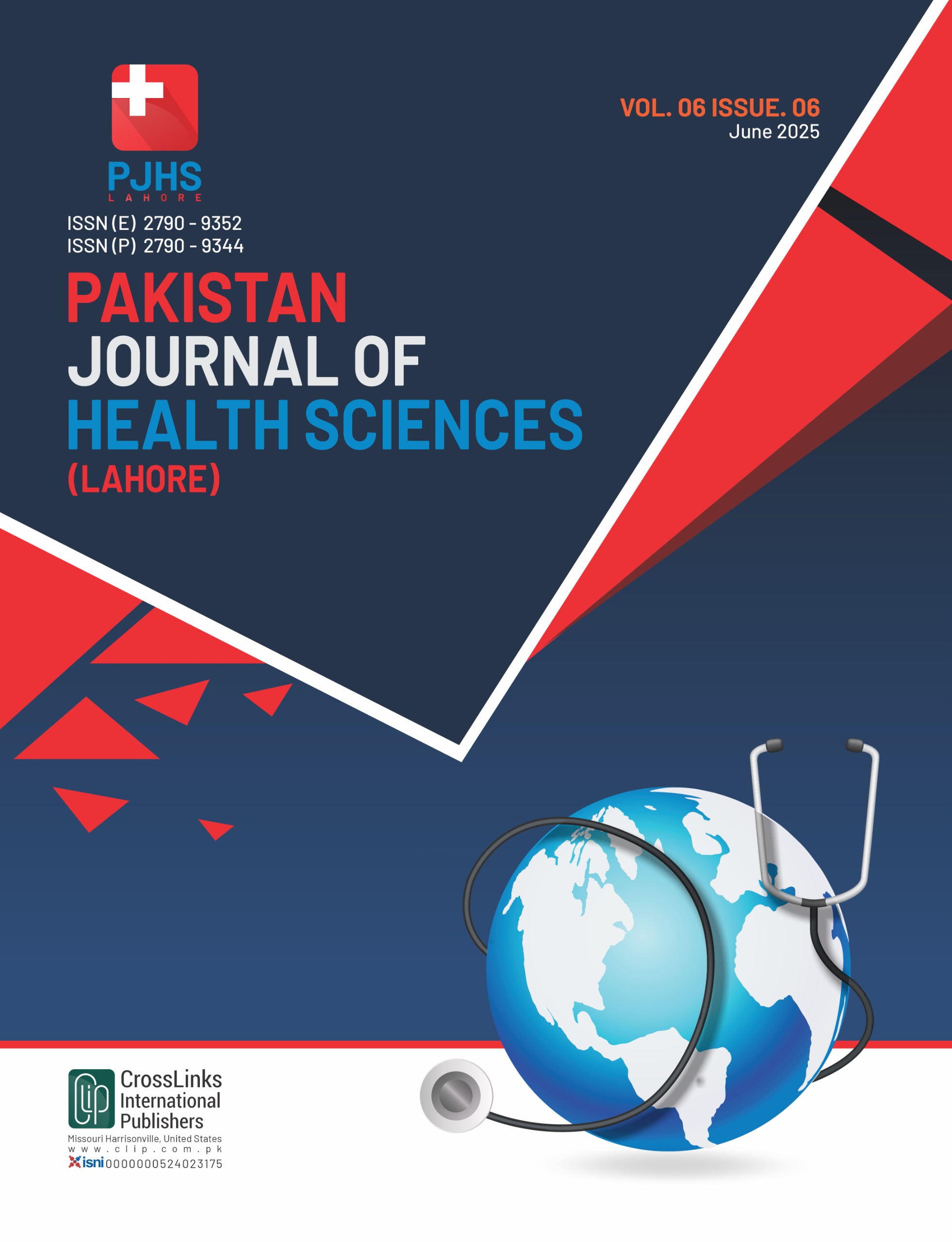A Climate Wake-Up Call: Pakistan’s Floods Reveal a Healthcare Crisis
DOI:
https://doi.org/10.54393/pjhs.v6i6.3309Abstract
Flooding has become a recurring nightmare in Pakistan, exacerbated by both natural and human-induced factors. The devastating monsoon floods of 2022 exposed the country’s deep vulnerability, damaging nearly 2,000 health facilities showing 13% of all in the country, and displacing more than 600,000 people. Vast areas of farmland, including three million acres of cereal crops and over 1.2 million livestock, were lost, severely disrupting food security and livelihoods.
Since July 2022, floods have inundated 116 districts, affecting 33 million people and placing immense strain on the already fragile healthcare system. More than 1,000 people lost their lives, 1,500 were injured, and over 161,000 were forced into overcrowded and unhygienic relief camps. As of now, 66 districts remain critically impacted. This crisis is not just a one-off disaster it is a symptom of worsening climate extremes, poor planning, and under-resourced public infrastructure. In 2025 alone, Pakistan has already witnessed deadly spring weather, including severe hailstorms, which claimed at least 32 lives.
The 2025 Climate Risk Index ranks Pakistan as the world’s most climate-impacted country, based on data from 2022. A third of the country was submerged, over 1,700 lives were lost, and economic damages surpassed $30 billion. At least 6.4 million people still require humanitarian assistance, and healthcare access remains dangerously limited. Although roughly half of the displaced population has returned home, the absence of clean water and sanitation continues to drive the spread of disease.
As the nation reels under relentless monsoon rains and deteriorating conditions, a public health emergency is unfolding silently alongside the visible destruction. The World Health Organization (WHO) has warned that flooding is fueling outbreaks of diseases such as dengue, malaria, acute watery diarrhea, COVID-19, and polio. With immunization campaigns disrupted and stagnant water everywhere, disease is spreading unchecked. Even before the floods, Pakistan had recorded over 4,500 measles cases and 15 instances of wild poliovirus. These fragile public health gains are now at grave risk.
In response, the World Health Organization (WHO) and Pakistan's Ministry of National Health Services are maintaining emergency operations in the affected regions. They are concentrating on long-term preparedness, healthcare restoration, medicine supply, and disease surveillance. However, it is imperative that these endeavors be dramatically increased. Millions of individuals continue to be vulnerable to preventable illnesses due to their lack of access to basic care and proper sanitation. This crisis is no longer solely about water; it is also about the future of healthcare, resilience, and survival in a world that is warming. Pakistan's silent emergency may soon become too loud to ignore if sustained action is not taken.
References
https://www.emro.who.int/pak/pakistan-news/major-health-risks-unfolding-amid-floods-in-pakistan.html (Assessed on July1, 2025)
https://www.aljazeera.com/news/2025/6/28/pakistan-slams-crisis-of-injustice-as-deadly-flooding-hits (Assessed on July1, 2025)
Iqbal M, Rabbani A, Haq F, Bhimani S. The floods of 2022: Economic and health crisis hits Pakistan. Annals of Medicine and Surgery. 2022 Dec 1;84:104800. DOI: https://doi.org/10.1016/j.amsu.2022.104800
Downloads
Published
How to Cite
Issue
Section
License
Copyright (c) 2025 Pakistan Journal of Health Sciences

This work is licensed under a Creative Commons Attribution 4.0 International License.
This is an open-access journal and all the published articles / items are distributed under the terms of the Creative Commons Attribution License, which permits unrestricted use, distribution, and reproduction in any medium, provided the original author and source are credited. For comments













